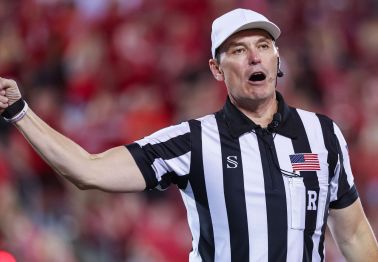Heading into the 2023-24 college football season, three new clock rules will affect your viewing experience — and it appears to be backfiring on the NCAA.
Here are the new rules:
- The game clock will run after first downs, except for the last two minutes of each half.
- Teams cannot call consecutive timeouts.
- Untimed downs will only occur in the second and fourth quarters as needed. If a foul happens at the end of the first or third quarter, it'll carry to the next quarter.
These changes aim to reduce the length of games, which averaged about 3.5 hours last season.
While this is the goal, that wasn't the case in Week 0.
It looks like the new clock rules successfully cut total game time by 3 minutes and added 14 minutes of room for commercials. https://t.co/kgOoiYZI1u
— RedditCFB (@RedditCFB) August 27, 2023
Twitter user @dadgumboxscores did some work looking into these rules, saying he took a seven-game sample from Week 0 that showed an average of 63.3 plays per game and an average duration of three hours and 24 minutes. Last season, through 896 games, there was an average of 68.7 plays per game, and the game duration was three hours and 27 minutes.
A quote tweet from @RedditCFB points out that games are shortened by three minutes but add 14 minutes of room for commercials, which means more money in play.
Of course, this is the first week, but these changes don't appear to be making impactful changes — and not anywhere near the impact the pitch clock in Major League Baseball has had. They especially don't seem great for fans wanting to just watch football.
New shot clock rule sucks in college football. Nobody asked for less football. We want less commercials
— Adam Kilby (@Kilbster) August 27, 2023
Hate the new college football clock rule? but anything to squeeze more commercials in?.
— FSU Esq. (@CW_ESQ) August 26, 2023
Because it was never about the game length.
It was about having more commercials. https://t.co/SBjdhCpyje
— C-PAYNE (@corycpayne) August 28, 2023
With this, the debate is now whether three minutes is worth the overall cut in the number of plays we'll see in games, which can improve players' draft stock or potential for more playing time.
College football still has some work to do to decrease the length of its games, and so far the new rules don't seem to be it.

